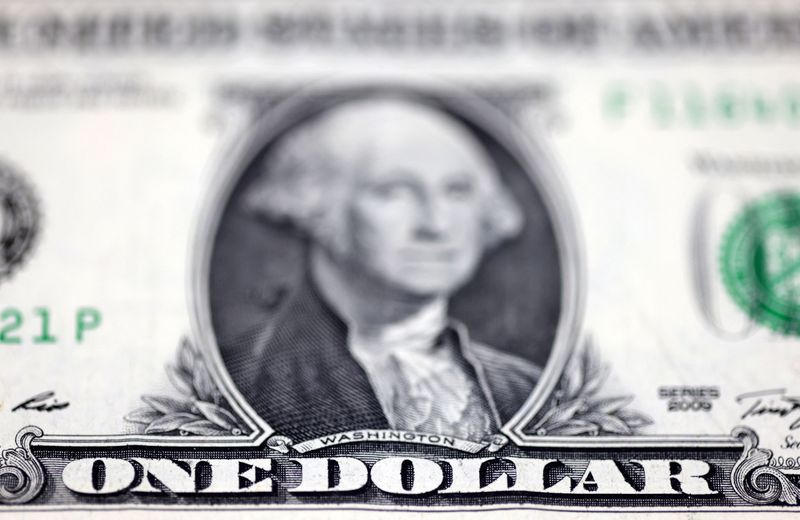Forex
Dollar shrugs off Fitch’s U.S. credit rating downgrade, yen rallies


© Reuters. FILE PHOTO: U.S. Dollar banknote is seen in this illustration taken July 17, 2022. REUTERS/Dado Ruvic/Illustration
By Harry Robertson and Rae Wee
LONDON/SINGAPORE (Reuters) – The dollar barely budged on Wednesday as investors shrugged off Fitch’s U.S. credit rating downgrade, while the yen made up ground as traders assessed the Bank of Japan’s approach to monetary policy.
The agency on Tuesday downgraded the United States to AA+ from AAA in a move that drew an angry response from the White House and surprised investors, coming despite the resolution two months ago of a debt ceiling crisis.
It cited likely fiscal deterioration over the next three years and repeated down-the-wire debt ceiling negotiations that threaten the government’s ability to pay its bills.
There was little reaction in the world’s most traded currency pair, with the euro down less than 0.1% against the dollar at $1.098.
The , which tracks the currency against six peers, stood 0.23% higher at 102.24, just shy of Tuesday’s three-week high of 102.43.
Analysts said the dollar was likely benefiting from its status as a safe haven, as investors’ risk appetite waned and global stocks fell.
“Even when there’s bad news … there is a behaviour where businesses and people think ‘I need my dollars to pay my invoices and dollar-denominated debts’,” said Jane Foley, head of FX strategy at Rabobank.
“This is why I think there really hasn’t been a huge push-back from this sort of news, because it doesn’t change the fact that people do still need dollars around the world.”
The dollar also found some support from Tuesday’s economic data that showed U.S. job openings remained at levels consistent with a tight labour market, even as they fell to the lowest level in more than two years in June.
A separate report suggested U.S. manufacturing might be stabilising at weaker levels.
The Japanese yen rose 0.42% to 142.74 per dollar and looked set to reverse three sessions of losses, with traders still assessing the implications of the BOJ’s move on Friday to loosen its grip on interest rates.
Deputy governor Shinichi Uchida said on Wednesday the central bank’s decision was aimed at making its massive stimulus more sustainable and was not a prelude to an exit from ultra-low interest rates.
“I think the market is still trying to get their head around what this whole thing means,” said Rodrigo Catril, senior currency strategist at National Australia Bank (OTC:).
Sterling was flat at $1.278. The Bank of England sets interest rates on Thursday and the market is uncertain whether it will deliver a 25 or 50 basis point increase from the current 5%.
The Australian dollar fell 0.52% to $0.658, having earlier slid to its lowest since June at $0.657.
It was extending a sharp fall from the previous session after the Reserve Bank of Australia on Tuesday held interest rates and signalled that it might have finished tightening.

 Forex3 years ago
Forex3 years agoForex Today: the dollar is gaining strength amid gloomy sentiment at the start of the Fed’s week

 Forex3 years ago
Forex3 years agoUnbiased review of Pocket Option broker

 Forex3 years ago
Forex3 years agoDollar to pound sterling exchange rate today: Pound plummeted to its lowest since 1985

 Forex3 years ago
Forex3 years agoHow is the Australian dollar doing today?

 Cryptocurrency3 years ago
Cryptocurrency3 years agoWhat happened in the crypto market – current events today

 World3 years ago
World3 years agoWhy are modern video games an art form?

 Commodities3 years ago
Commodities3 years agoCopper continues to fall in price on expectations of lower demand in China

 Economy3 years ago
Economy3 years agoCrude oil tankers double in price due to EU anti-Russian sanctions





















